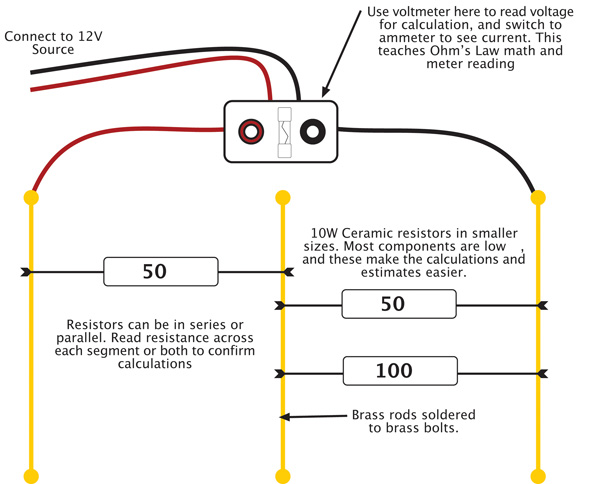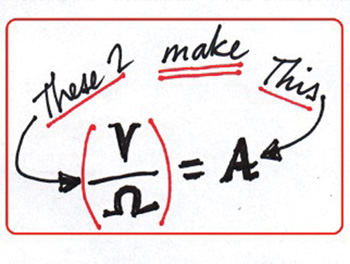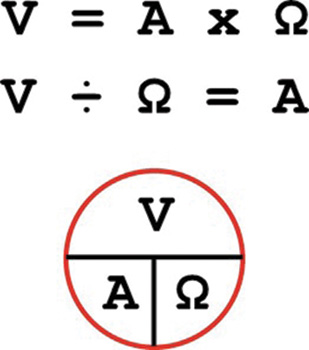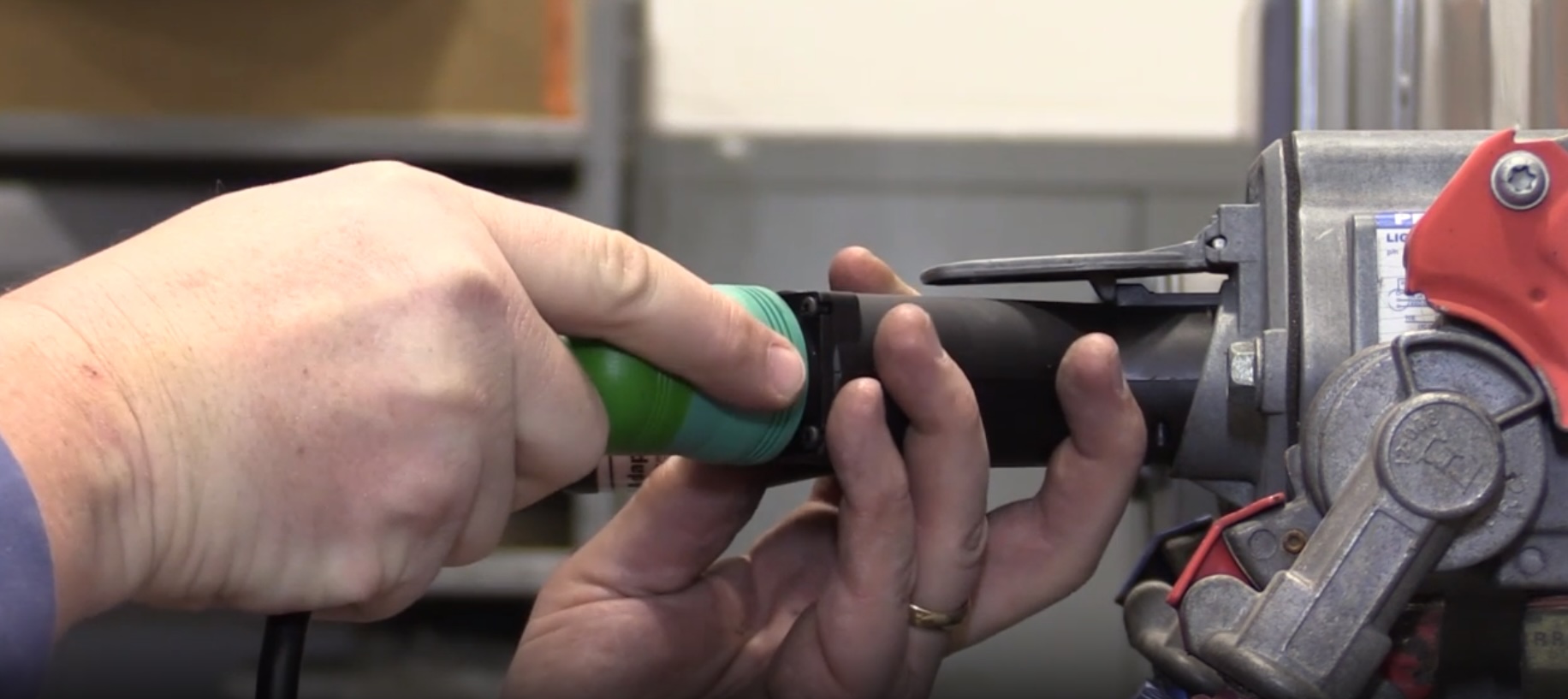 Let’s be honest — most technicians didn’t endure four years of high school sitting in the front row of math class. If they did, it’s because they either had to because they were trouble-makers, or because the teacher was cute.
Let’s be honest — most technicians didn’t endure four years of high school sitting in the front row of math class. If they did, it’s because they either had to because they were trouble-makers, or because the teacher was cute.
This is a hard and fast reality; try as you might to change history, you can’t, so we can assume that the person who shows up for a tech program at a local community college or tech school still isn’t really all that excited about sitting in a math class.
Sadly though, that’s generally what happens when they enter our programs. The average basic electricity class starts with three weeks of math, dozens of pages of resistor combination worksheets, and includes the confusing E=IR formula for Ohm’s Law.
Ohm’s Law is the single-most important concept that a technician MUST understand to be a good diagnostician, whether they like it or not.
 Our typically math-phobic 18-year-old is forced to wallow through a tortured and confusing explanation of what is, in truth, a very simple electrical idea. The non-math reality of Ohm’s Law is not all that tough to understand. It’s the relationship between the elements that really matters.
Our typically math-phobic 18-year-old is forced to wallow through a tortured and confusing explanation of what is, in truth, a very simple electrical idea. The non-math reality of Ohm’s Law is not all that tough to understand. It’s the relationship between the elements that really matters.
When we do teach the math, we generally use the version of the formula established a long time ago by a non-mechanic. The real physical concept is hidden by vague math, that I have heard actually described as “unimportant” or is really just “useless theory that you don’t use to fix a truck.”
Here’s the idea. Any workingtechnicians can tell you about volts (V), ohms (Ω) and amps (A), but none will tell you what E, I and R are. That’s because V, Ω and A are on the multimeter that’s in his box, while the E, I and R version of Ohm’s Law is the science version.
 E, I and R are required for other more complicated calculations that none of us will ever see.
E, I and R are required for other more complicated calculations that none of us will ever see.
Why then do we teach it? Simple — it’s what’s in the book. Why is it in the book? Because it’s always been in the book, and it will only be in a book. All instructors “teach most what they know best,” which is the Ohm’s Law circle. The circle isn’t wrong, unless the top letter is an “E”.
Stepping outside of our comfort zones on an uncomfortable subject is not easy, but this is one time you should.
I believe we need to immediately stop using the E, I and R formula, and teach meter reading before Ohms’ Law using practical examples, saving the boring and confusing (but important) math until the end of electrical class.
This isn’t because the 18-year-olds we teach are stupid; it’s simply because teaching the math of Ohm’s Law at the front of the class out of habit is silly.
Students will benefit from understanding what a REAL circuit is first, not just a bunch of black lines on a white page. The real relationship we need to understand is this: VOLTS and OHMS make AMPS. The REAL formula is V/Ω=A because the two things that make the current are together on the same side of the equation.
However, math rules (written by non-mechanic math people) require total simplification of all formulas so V/Ω=A, becomes V=AΩ (or E=IR), so there won’t be any fractions. This is mathematical, not mechanical.
And, wrong.
If we place V and Ω on the left, you can more readily explain the true nature of how voltage and resistance change current. If we teach it any other way, students don’t automatically understand that current can’t change volts. Here’s a great way to describe it — “you can buy voltage and resistance, but you have to make current.”
Fractions do top the list of math skills we lack, but rather than teaching the Ohm’s Law concept logically with rules that are helpful to us (the wrench turners), we teach it the way the engineers wrote it. In the end, as a result, the vast majority of techs live and work day-to-day having a very less-than-adequate knowledge of basic electrical concepts.
Trust me, I’ve heard it all. Teaching Ohm’s Law math saying “if you know two, you can find the third” is a very dangerous thing.
Technicians are not stupid people, so doing a simple division problem is not beyond us or our students. But, they need to know why the equation works first. If we link the two halves together (practice and math) students won’t dismiss the “theory” out of hand and choose to ignore the truth because of a series of bad experiences in school.
Math is not about numbers — math is about life. Everything that a vehicle does can be described with math, and since most of the people reading this are pretty impressive experts about what a car, truck or excavator does, the math shouldn’t be intimidating.
But, there’s no practical reason to slog through three weeks of depressing complexity when teaching meter reading and circuit analysis first will allow students to actually see the V, Ω and A they later start punching into the calculator.
I don’t want you to be a math major, I just want to make a point. It’s critical that we blend theory and practice if we want to have a skilled and adaptable and confident workforce in the future. The whole point of being able to understand Ohm’s Law is to be able to use it, and we use it with meters and circuit analysis.
There’s no reason we have to stick to a past we didn’t choose. We should be handing down good practices and methods from generation to generation, but not confusion created by a bad choice.
We have the right and ability to change our world, change our realities, and change the letters in a math formula. If we decide to view our problems in a way that makes sense to us, maybe they won’t seem so imposing.
You need to stop using E, I & R immediately, if you haven’t already. You should consider making this one simple, yet powerful, change to your curriculum, and do it realizing that you are allowed to.
I don’t mean to shock you, but, electricity really doesn’t need to be this hard.
To learn more about Dan’s take on electrical instruction or Sullivan Training Systems, visit: www.brighterideas.com or e-mail Dan at: [email protected].
Are you an instructor, teacher or automotive professional who would like to contribute an Instructor’s Insights
column? E-mail your commentary idea along with your contact information to [email protected].


